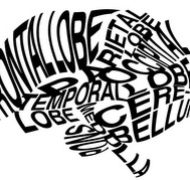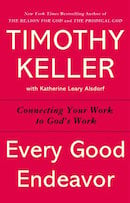Book Review: Brain Rules by John Medina
Blog / Produced by The High Calling
What would you think if the school system cut back time on academics and required recess twice a day? Or, what if—at the office—board meetings were conducted while people walk on treadmills? What would happen to test scores and problem-solving skills if we integrated more exercise into the hours we spend at school and work?
These are some of the questions John Medina asks in his book Brain Rules: 12 Principles for Surviving and Thriving at Work, Home, and School. Medina is a molecular biologist who studies the genes involved in human brain development. Although his expertise is in the study of the genetics of psychiatric disorders, Medina says that his real interest is in trying to understand the fascinating distance between a gene and a behavior.
In Brain Rules: 12 Principles for Surviving and Thriving at Work, Home, and School, Medina does just that. In this delightful book, he introduces us to twelve things we know about how our brains work and—after presenting the science—poses some ideas for the research community to explore in hopes of better understanding how these brain rules can lead to more adaptive behavior.
Rule number one, for example, is this: Exercise Boosts Brain Power. Well, that’s just common knowledge, you might say. But did you know that adding a regular exercise program can significantly improve the cognitive performance of school-age children and the elderly? That when the exercise program is withdrawn, scores plummet back to pre-program levels? Did you know that your lifetime risk for dementia is cut in half if physical activity is part of your leisure-time activities?
Medina cites study after study of the cognitive benefits of exercise. The human brain became the most powerful in the world under conditions where motion was a constant presence, he says. Our brains evolved out of the necessity to think as we move. Physical activity is cognitive candy, says Medina.
Cognitive candy. And although this is a well-known fact, few schools or places of employ make use of the information to benefit students and employees—or productivity, for that matter. We need better ways to apply the effects of physical activity in the real worlds of education and business.
Medina’s book is a delicious combination of science, stories, and questions. He really makes good use of rule number four: We Don’t Pay Attention to Boring Things. Research on attention shows that most people lose interest after about ten minutes in a typical presentation. Medina notes that two ways to keep people engaged are telling narratives and creating events rich in emotion. He successfully utilizes these strategies in his book—he even makes studying brain anatomy interesting. Each chapter is closed with a summary page of the top three or four points for takeaway—which is a helpful way to organize all of that useful information, as well as integrate rule number five: Repeat to Remember.
This book is filled with rich ideas for educators, parents, business leaders, or anyone who wants to enhance the learning experience. Medina talks about the importance of examples in teaching material (rule #5), the benefits of repetition at timed intervals as opposed to one long session (rule #6), how an afternoon nap might affect learning (rule #7), how stress erodes creativity (rule #8), and the importance of incorporating multiple senses in the learning process (rule #9).
And that’s just a drop in the bucket. Medina imparts so much good information in this book, and it’s all very accessible—very readable. Not only did I enjoy my time in Brain Rules and learn some new things, after I put it down I felt a sense of burgeoning optimism. Medina ends the book with a charge to his readers to remain curious—to be lifelong learners. Something of the author’s sense of wonder is contagious and makes me want to get the most out of my brain.
And I’m visualizing how to squeeze a treadmill into my tiny office.
Image by Zachary Veach. Used with permission. Sourced via Flickr. Post by Laura J. Boggess.





